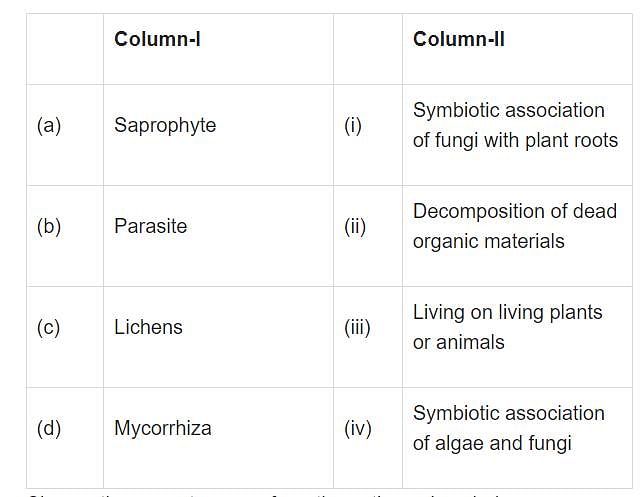Test: Viroids, Prions and Lichens - NEET MCQ
15 Questions MCQ Test Biology Class 11 - Test: Viroids, Prions and Lichens
What is the term used to describe infectious agents that consist of abnormally folded proteins, similar in size to viruses?
| 1 Crore+ students have signed up on EduRev. Have you? Download the App |
Which of the following statements is wrong for viroids?
Bacteriophage is similar to a fungus & bacterium in having :-
Which of the following diseases is caused by prions in cattle?
Lichens are symbiotic associations between which two types of organisms?
Which of the following is not correctly paired ?
"Potato Spindle tuber " disease is caused by a pathogen that is:
Who discovered viroids in 1971, and what disease did they find it caused?
All given statements stand true with respect to Lichens, except
Which of the following pathogenic diseases could have symptoms like mosaic formation, leaf rolling and curling, yellowing and vein clearing, dwarfing, and stunted growth?
Who discovered viroids and what disease did they cause in potatoes?
|
182 videos|366 docs|154 tests
|


















